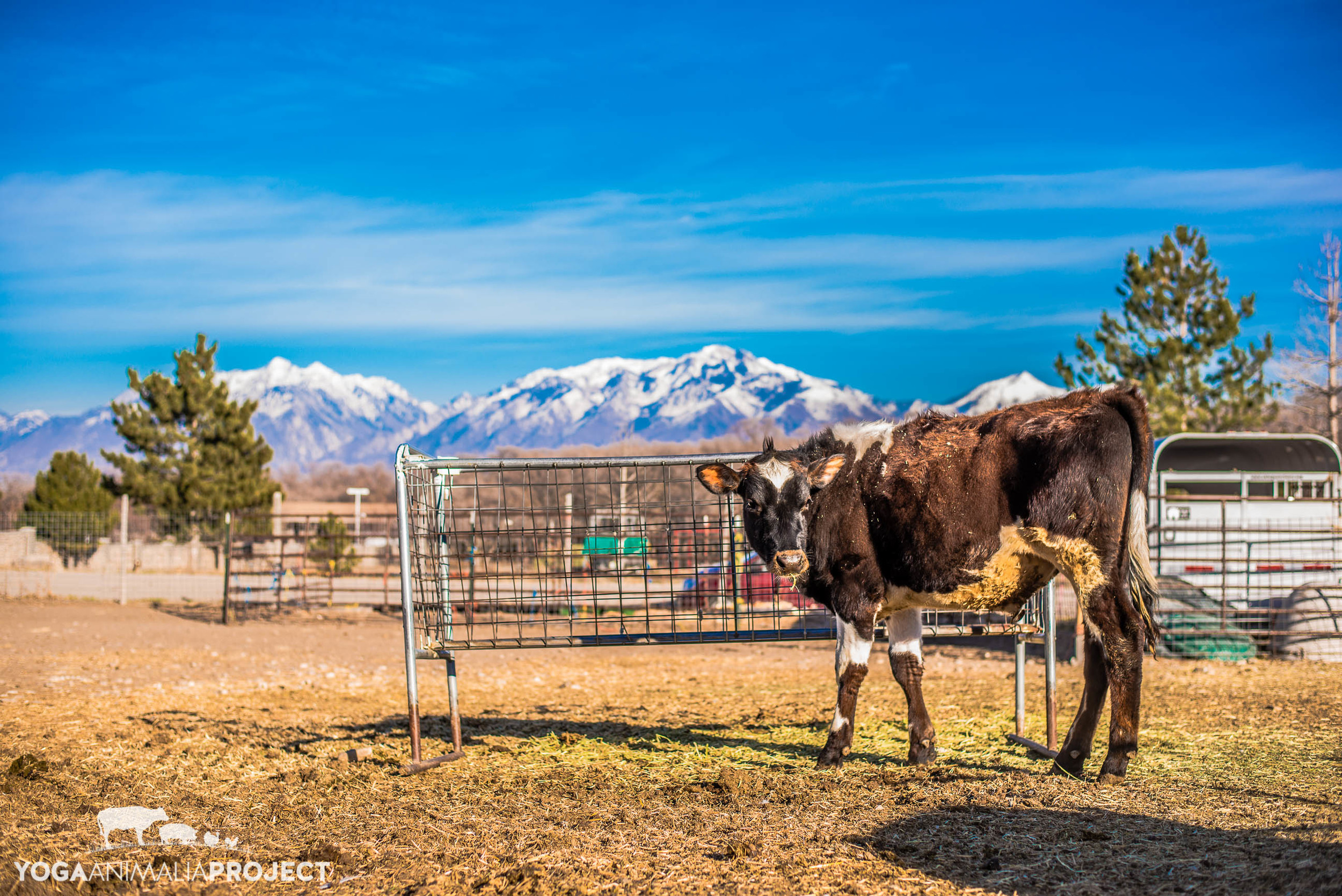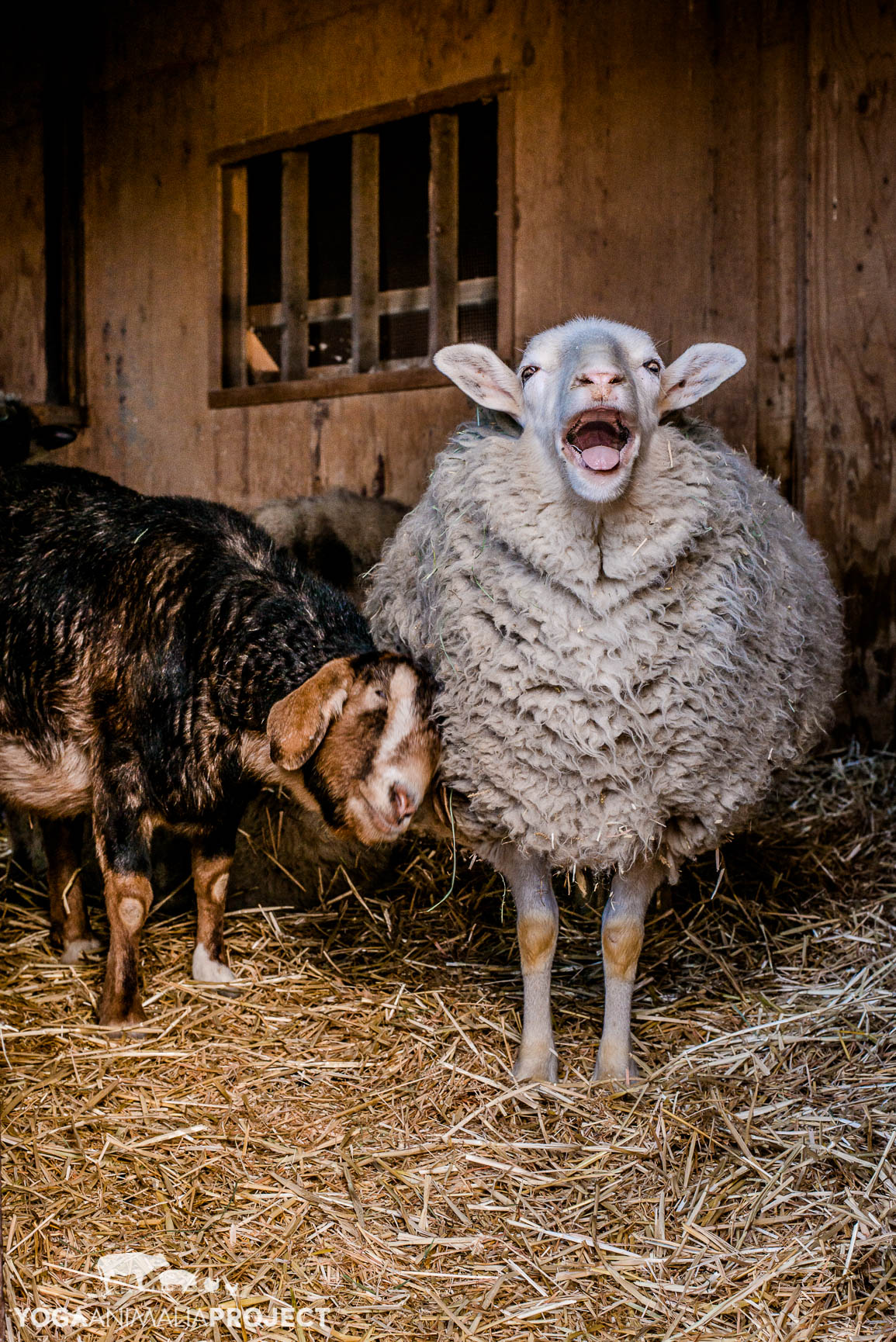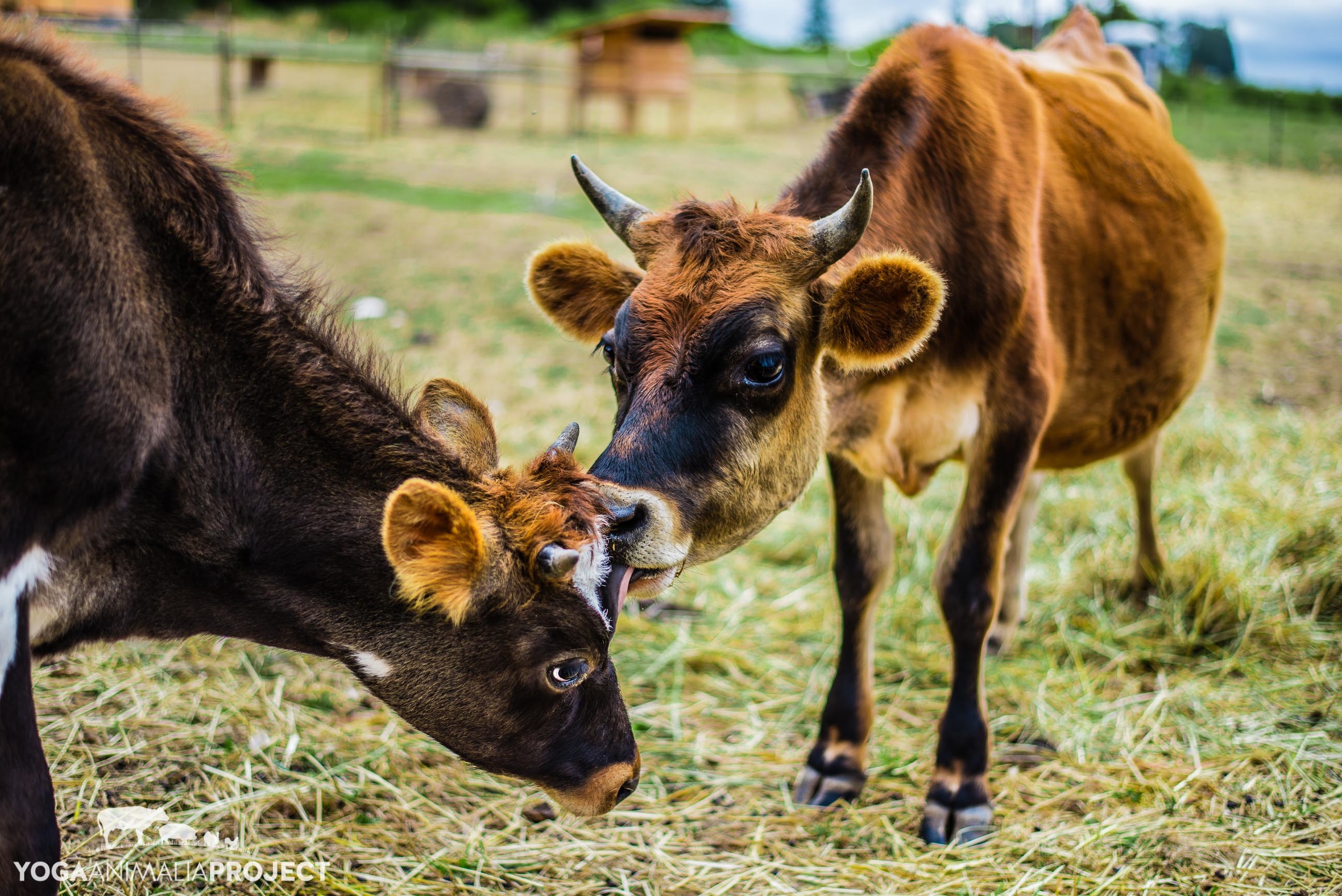After writing Deuce’s story (if you missed it, grab a facial tissue and click here to read about this amazing boyo), it got me thinking about all the stories of heartbreak found at sanctuaries. Tragic tales are part of sanctuary life. To be honest they are one of the main sources fueling donation requests, pulling the heartstrings of donors, encouraging the spread of the story. I don’t find fault in this; these tales should be shared, the public needs to be made aware, and these rescues or veterinary procedures happen because donations can help pay for it. However, one of the less thought upon aspects of these sanctuary stories is the effect they have on the humans charged with the rescue, rehabilitation, and care of the individuals.
Farmed animal care giving is demanding work, and part of that work requires integrating prior stories of new rescues, which can include grisly accounts or firsthand exposure for on-scene rescuers; continuing to integrate the story as the individual’s personality starts to shine forth as healing happens; adapting as physical challenges present; and then ultimately coming to terms with being part of a discussion about quality of life and euthanasia. And that for each individual in many cases. That is a lot to contain on top of all the physical duties, especially when so few resources can be directed to help the human animals.
As a former caregiver, and in quite a few conversations I have had with other caregivers, I notice a tendency for these tragic tales to weigh on the humans. There is a growing field of study on this topic: it is referred to as compassion fatigue, or secondary traumatic stress. It equates to a lessening of an individual’s compassion due to chronic stress from care giving. I’ve seen and felt this personally and in others when present for new rescues, or major medical issues, or deaths; the accumulation of emotions can be intense and challenging to address. In discussions with leaders in the sanctuary world, compassion fatigue is one, if not the, leading cause for sanctuary caregivers to quit, and many sanctuaries do not even have a name for it other than burnout – one part of compassion fatigue, but not the whole of it.
The purpose of this first post is not to be an exhaustive examination of compassion fatigue – I honestly do not yet have that in me. The purpose instead is to bring awareness – which is the first step to dealing with the challenge. If the included graphic or discussion strikes a chord for you, I seriously encourage you to check out the Compassion Fatigue Awareness Project, or if you know caregivers personally, whether they work at an animal sanctuary or are care giving for an elderly human, I encourage you to support them in learning for themselves.
And to end a bit more joyously, I leave you with photos of humans loving nonhumans:




























